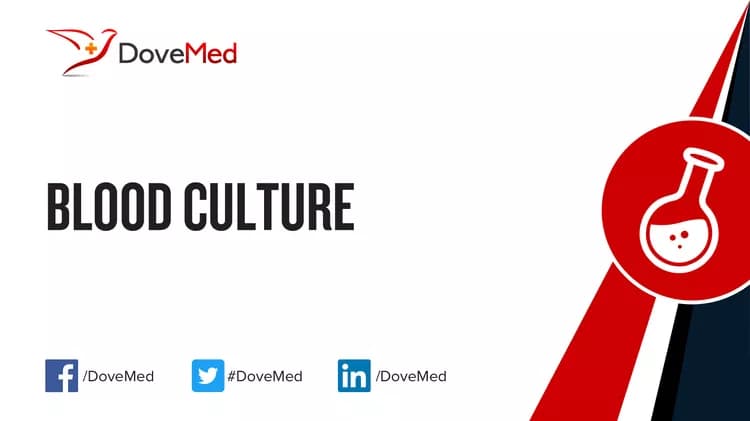What are the other Names for this Test? (Equivalent Terms)
- Bacterial Blood Culture
- Blood Culture for Virus
- Fungal Blood Culture
What is Blood Culture Test? (Background Information)
- The term ‘septicemia’ is used to denote the presence of bacteria or other microorganism, like fungi or viruses in blood. Presence of such microorganisms in blood, may lead to a spread of infection to the whole body, leading to a serious and life-threatening condition, called sepsis
- Such microorganisms may enter blood from any infectious sources in the body, or they may enter into blood, directly from outside, through an intravenous lines, intravenous injections, etc.
- Urinary tract infection, pneumonia, meningitis, kidney or bone infection may lead to septicemia. Surgical procedures, low body immunity, prosthetic heart valve replacement, chronic treatment with steroids, uncontrolled diabetes, bone marrow transplantation and solid organ transplant (such as liver, kidney, and heart), places an individual at higher risk for development of septicemia
- A Blood Culture is a laboratory test to check for bacteria, fungi, or virus, in the blood sample
- Blood Cultures are performed under the following circumstances:
- In suspected cases to identify the presence of bacteria, fungi, or virus, in blood
- To identify the type of microorganism causing the infection
- And to perform antibiotic susceptibility testing on identified microorganisms, to guide the treatment
What are the Clinical Indications for performing the Blood Culture Test?
The healthcare provider may order a Blood Culture, if one has symptoms of a serious blood infection (sepsis). Other lab tests and investigations are also ordered along with a Blood Culture, to locate the source of infection.
Some of the symptoms associated with sepsis include:
- High fever and/or chills
- Rapid breathing and heart rate
- Confusion
- Very low blood pressure
- Low urine output
It has to be noted that newborns and young children, may not have typical signs and symptoms of sepsis.
How is the Specimen Collected for Blood Culture Test?
Sample required: Blood
Process: Insertion of a needle into a vein (arm).
Preparation required: None
Multiple samples are collected, either at different times, or from different sites on the body, in order to achieve better results. The sample is sent to a laboratory, where it is placed in a special dish, incubated in a controlled environment for 1-7 days, and monitored for growth of pathogen. This is called a culture. If there is a growth, then further tests are done to determine the specific type of pathogen causing the infection.
What is the Significance of the Blood Culture Test Result?
The Blood Culture test can help evaluate the cause of fever or shock. It can also help in selecting the best antibiotic, to kill the microorganism responsible for the infection.
Normal or negative test result:
- Normal results mean that there is no growth of any microorganisms in the culture of the blood sample
- However, negative results do not imply an absence of microorganism in blood, in all cases
- If the microorganism is difficult to be grown in the culture medium, or if viruses are the cause of septicemia, the results may be negative
- If the individual is started on an antibiotic therapy, prior to performing a Blood Culture; then, often the culture results may return (or be reported) as negative
- With negative results, additional tests may have to be ordered, to identify the cause of suspected infection
Positive test result:
- A positive test result means that there are infectious microorganisms in blood
- An antibiotic sensitivity test helps to find out the antibiotic, to which the disease-causing organisms are most susceptible. The infection must be treated immediately, typically in a hospital setting
- However, sometimes the results are positive as a result of contamination. The most common cause of contamination is due to bacteria (that are normally present) on the skin. These bacteria contaminate the blood sample, during the collection process
- Multiple samples from different sites, or at different times, are collected to help the healthcare provider rule out a possibility of contamination
- Multiple samples are also collected to increase the chances of isolating the organism (causing the infection), during testing
The laboratory test results are NOT to be interpreted as results of a "stand-alone" test. The test results have to be interpreted after correlating with suitable clinical findings and additional supplemental tests/information. Your healthcare providers will explain the meaning of your tests results, based on the overall clinical scenario.
Additional and Relevant Useful Information:
- In some cases, before any negative result is confirmed, a set of 3 Blood Cultures may have to be performed
- The growth of the organism, causing the infection, in the culture may be affected by factors, such as:
- The amount of blood taken
- The time when the blood sample was collected
- The type of culture done
- And a recent use of antibiotics by the individual (if any)
- The healthcare provider interprets the results of Blood Culture test, keeping in mind all the different factors
Certain medications that you may be currently taking may influence the outcome of the test. Hence, it is important to inform your healthcare provider, the complete list of medications (including any herbal supplements) you are currently taking. This will help the healthcare provider interpret your test results more accurately and avoid unnecessary chances of a misdiagnosis.
Related Articles
Test Your Knowledge
Asked by users
Related Centers
Related Specialties
Related Physicians
Related Procedures
Related Resources
Join DoveHubs
and connect with fellow professionals


0 Comments
Please log in to post a comment.